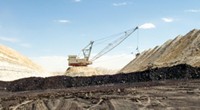Advertisement
Grab your lab coat. Let's get started
Welcome!
Welcome!
Create an account below to get 6 C&EN articles per month, receive newsletters and more - all free.
It seems this is your first time logging in online. Please enter the following information to continue.
As an ACS member you automatically get access to this site. All we need is few more details to create your reading experience.
Not you? Sign in with a different account.
Not you? Sign in with a different account.
ERROR 1
ERROR 1
ERROR 2
ERROR 2
ERROR 2
ERROR 2
ERROR 2
Password and Confirm password must match.
If you have an ACS member number, please enter it here so we can link this account to your membership. (optional)
ERROR 2
ACS values your privacy. By submitting your information, you are gaining access to C&EN and subscribing to our weekly newsletter. We use the information you provide to make your reading experience better, and we will never sell your data to third party members.
Environment
How Emissions Offsets Work
Congress wades into murky, high-stakes policy for climate legislation
by Cheryl Hogue
March 23, 2009
| A version of this story appeared in
Volume 87, Issue 12

AS CONGRESS CONSIDERS ways to curb U.S. greenhouse gas emissions, it is wrestling with thorny and complicated policy details that will have big economic impacts over the long term. One of those is emissions offsets, which are almost guaranteed to be a high-stakes element of any policy that would cap the amount of greenhouse gases released in the U.S.
Offsets are based on the principle of reducing, avoiding, or capturing greenhouse gas emissions in one place to compensate for releases elsewhere.
They would differ from emissions allowances established under a cap-and-trade program. Allowances are bought and sold among facilities legally required to reduce their emissions, such as chemical manufacturers and coal-fired power plants.
Offsets, on the other hand, would be generated by sectors such as agriculture and forestry that don't legally have to restrict their emissions. The offsets would then be sold to facilities that do have to reduce emissions. An essential trait of an offset project is that it would not have happened without the economic incentives created for it by the emissions reduction program.
For instance, a plant that burns coal to make electricity might buy offsets equivalent to 15% of the carbon dioxide it expects to emit during the next year. The money the facility shells out might pay for protecting a tropical forest in South America from loggers' saws and help finance a domestic project to capture methane, another greenhouse gas, from landfills. In both cases, a key condition deeming the offset a valid one is that the protection of the tropical forest parcel and the capture of the landfill gas would not have been done in the absence of an offset program.
Under this example, the trees will continue to absorb carbon dioxide from the atmosphere, incorporating the gas through photosynthesis into biomass. The landfill project will keep methane, which has 25 times the global warming potential of CO2 over the course of a century, out of the air.
In return, the coal-fired plant gets a 12-month credit for cutting emissions equivalent to the amount of CO2 those trees absorbed and the amount of methane captured from landfills for that year. The credit would apply regardless of whether the power plant decreased, maintained, or increased the amount of emissions that come out of its smokestacks.
Although it's a fairly new concept for U.S. policymakers, offsets are already in use under the Kyoto protocol. The European Union uses offsets in its Emissions Trading Scheme to meet its greenhouse gas reduction goals under that 1997 international climate-change treaty. The U.S. is not a partner in that accord.
OFFSETS ARE politically popular in the U.S. They were part of several climate-change bills introduced in Congress in recent years. And they are part of the blueprint for domestic climate policy recently endorsed by the U.S. Climate Action Partnership, a coalition of environmental advocacy organizations and large businesses including DuPont, Dow, and Johnson & Johnson.
The motivation for offsets is simple economics. Companies may find it cheaper to buy offsets than to make deep cuts in or to buy enough allowances to cover their actual emissions.
"The theory is that you save money and the atmosphere doesn't know the difference," explained Rep. Edward J. Markey (D-Mass.), who supports the use of an offsets program if it is carefully constructed. Markey chairs two panels that are addressing climate change—the House Energy & Commerce Subcommittee on Energy & Environment and the House Select Committee on Energy Independence & Global Warming.
The theory behind offsets seems solid, Markey said, but "in practice, offsets turn out to be one of the more challenging aspects of designing effective climate legislation." He made his comments at a March 5 hearing of the Energy & Environment Subcommittee that examined offsets.
An Offset Program Turns Sour
For years, Chinese refrigerant makers simply vented waste gas to the environment. Then an offset program under the Kyoto protocol transformed their industry overnight. Now, capturing and destroying that waste gas is more profitable than making the refrigerant.
The Chinese factories make the refrigerant hydrochlorofluorocarbon-22. The waste product is hydroflurocarbon-23, a potent greenhouse gas with 11,700 times the global-warming potential of carbon dioxide. In the 1990s, U.S. and European plants making HCFC-22 voluntarily eliminated emissions of HFC-23.
Michael W. Wara, a Stanford Law School assistant professor, has extensively studied the Kyoto protocol program for emissions offsets, which is called the Clean Development Mechanism. Wara testified before Congress in early March about how the offset program has become a "perverse incentive" to Chinese factories to produce and inexpensively destroy HFC-23 as a main part of their business. These factories can then sell offsets for HFC-23 destruction at a profit.
The European Union is the buyer for the HFC-23 offsets, Wara said. EU governments and companies will end up paying about 4.7 billion euros, or approximately $6 billion, to refrigerant manufacturers and to the Chinese government, which heavily taxes these offset projects, he explained. This is in contrast to the estimated 100 million euros, or $129 million, it costs the Chinese factories to destroy the waste gas, he said.
During the past two years, governments have tried to clamp down on these sort of Clean Development Mechanism projects, Wara said. And they are seeking more cost-effective emissions offset projects, he added.
Reform of the Clean Development Mechanism is on the agenda for international climate-change negotiations throughout 2009. The talks are aimed at crafting a replacement for the Kyoto protocol, which calls for industrialized countries to reduce their emissions between 2008 and 2012.
Perhaps the biggest question is whether offsets actually curb the amount of CO2 or other greenhouse gases going to the atmosphere. The possibility looms large that offsets could merely allow unmitigated releases of greenhouse gases by purchasers because they fund projects that are likely to happen anyway, such as installation of wind turbines or solar panels. Or payments could go to projects that overestimate the amount of greenhouse emissions they offset, thereby delivering what Rep. Gene Green (D-Texas) called "phantom reductions."
Some Republicans expressed other skepticism about the use of offsets as well as the need to address climate change. Rep. Fred Upton (R-Mich.), the ranking Republican on the Energy & Environment Subcommittee, said, "If we're relying on offsets, we must ensure that the money spent is having a real, tangible, and verifiable environmental benefit that would not have otherwise occurred," he said.
"If offsets fail to deliver real reductions in global-warming pollution, they will compromise the emissions cap," Markey said. "That is unacceptable, given the urgency of the climate crisis."
At the hearing, some members of the House who support action on climate said they see offsets as a key means to lowering costs, especially for consumers, as the U.S. puts in place regulations to cut greenhouse gas emissions. Others, meanwhile, indicated more parochial interests.
For example, some legislators seemed to view offsets as a potential financial windfall for farmers in their districts. Some want growers to sell offsets for adopting minimal tilling techniques that increase the amount of carbon stored in soil as organic matter. Others seek offsets for methane captured from manure pits at large hog or cattle feedlots.
One lawmaker from coal country, Rep. Frederick Boucher (D-Va.), favored offsets. Offsets would keep the price of coal affordable in the first years of a greenhouse gas emissions reduction effort, he pointed out. Affordable coal in turn would keep in check the cost of natural gas, a key feedstock of the chemical industry, because utilities would have less incentive to switch fuels to cut emissions.
At least one major environmental advocacy group opposes the use of offsets. Testifying at the hearing, Emily Figdor, federal global-warming director of Environment America, an organization formerly known as the U.S. Public Interest Research Group, said offsets could jeopardize the integrity of a cap-and-trade program.
Equating offsets to emissions allowances is an apples-to-oranges comparison, Figdor said. An allowance represents a unit of CO2 or another greenhouse gas that actually will be emitted. An offset, meanwhile, is an emission that theoretically doesn't happen because of the money paid by the purchaser. Therefore, she said, allowances and offsets shouldn't be interchangeable.
Also unclear is how to determine whether an offset project would not have happened without a cap-and-trade system, Figdor said.
IN ADDITION, Figdor argued that using offsets will delay the transition to cleaner energy technologies. This is because relying on direct emissions reduction to achieve a national cap will spur innovation and new technologies, she said. Plus, relying on offsets will lower supplementary benefits—such as creating less air pollution—that are expected from cuts in CO2 releases.
A host of questions about offsets abounds, said John B. Stephenson, director of natural resources and environment for the Government Accountability Office, Congress' investigative agency. He told the subcommittee there is no agreement on which activities and greenhouse gases should be allowed for offsets and no minimum timelines for projects to continue.
If Congress includes offsets in climate-change legislation, Markey said, "they must be subject to conservative, science-based standards. Rigorous monitoring and verification requirements must also be applied." Markey is pushing for creation of an independent science advisory committee to oversee the development and implementation of an offset program.




Join the conversation
Contact the reporter
Submit a Letter to the Editor for publication
Engage with us on Twitter